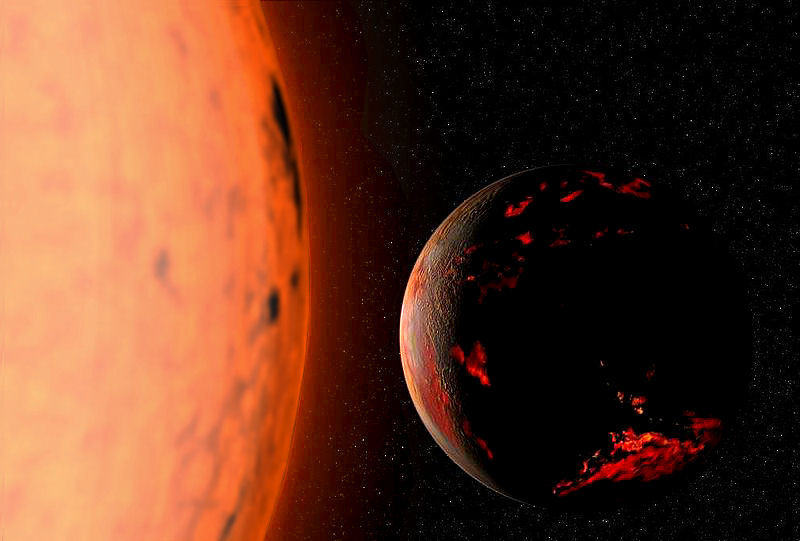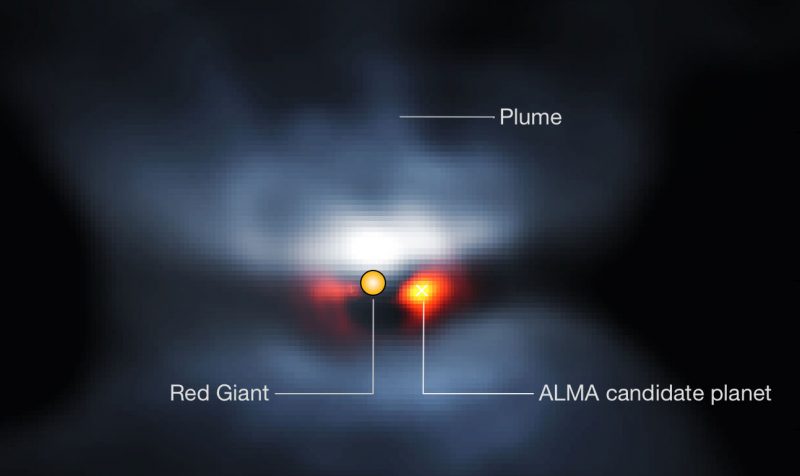
It’s common knowledge nowadays that Earth’s sun won’t last forever. Our sun is burning along merrily as a middle-aged star, but in 5 billion years, as the sun ages, it’ll swell to become a red giant. What’ll happen to Earth when our sun is some 100 times bigger than it is today? An international team of astronomers says they’ve found an analog to the future Earth/ sun system in the distant star L2 Puppis. Five billion years ago, this star was very similar to our sun as we know it today. Now L2 Puppis a red giant. What’s more, the team has found an object orbiting the red giant at a distance not terribly different from Earth’s orbit around our sun. These astronomers’ work was published online December 8, 2016 in the peer-reviewed journal Astronomy & Astrophysics.
Leen Decin from the KU Leuven Institute of Astronomy was a member of the research team. She commented:
… the fate of the Earth is still uncertain. We already know that our sun will be bigger and brighter, so that it will probably destroy any form of life on our planet.
Five billion years from now, the sun will have grown into a red giant star, more than 100 times larger than its current size.
It will also experience an intense mass loss through a very strong stellar wind. The end product of its evolution, 7 billion years from now, will be a tiny white dwarf star. This will be about the size of the Earth, but much heavier: one teaspoon of white dwarf material weighs about 5 tons.
During our sun’s metamorphosis from ordinary star to red giant to white dwarf, both Mercury and Venus – worlds inside Earth’s orbit – will be engulfed and destroyed. Earth won’t be engulfed. What will happen to it?

Astronomers are looking to L2 Puppis for answers. This star is visible to the eye but very faint, located in our sky between the bright stars Canopus and Sirius. It’s 208 light-years away. The newly found object orbiting L2 Puppis lies about 200 million miles (300 million km) from its star. That’s in contrast to 93 million miles (150 million km) between our Earth and sun. So the system is not an exact twin to ours, but these astronomers say it’s similar and:
… offers a unique preview of our Earth 5 billion years from now.
A deeper understanding of the interactions between L2 Puppis and its planet will yield valuable information on the final evolution of the sun and its impact on the planets in our solar system. Whether the Earth will eventually survive the sun or be destroyed is still uncertain, these scientists say. They think L2 Puppis may be the key to answering this question.
Meanwhile, how else can we think about the ultimate fate of Earth when our sun swells to its red giant phase? What about what astronomer Leen Decin said above, about all life on Earth being destroyed? Is that for certain? The guys at ASAPScience don’t think so. They created the video below to give you another answer to the question, involving moving the Earth!
Bottom line: Astronomers have found an object orbiting the red giant star L2 Puppis, which they say can provide insights into our Earth/ sun system as it ages.











